Gyeongju in South Korea is often described as a ‘museum without walls’ which may sound like a cliché but it couldn’t be more appropriate. It is a city with an enormously rich history that has so many fascinating sites to explore. We spent some time in Gyeongju on our recent trip to South Korea. We could easily have spent longer. Here’s our essential 2 day Gyeongju itinerary which will ensure that you see the highlights of this amazing city and leave you with a desire to see much more.
Please note that this post contains affiliate links. If you click through and decide to make a purchase we will make a small commission, at no extra cost to you, which will help towards the costs of running this site.
History of Gyeongju
Gyeongju has a long history that dates back over two thousand years. It was established in 57 BCE as Saro-guk when a number of villages in the area were united by leader Park Hyeokgose, the founding monarch of the Silla, one of the Three Kingdoms of Korea.
The city expanded over the years and eventually became the capital of the region, home to the court of the Silla people, who were the wealthy elite of the kingdom. They ruled for nearly 1000 years. Silla was known as the region of gold, and many gold objects have been found, reflecting the status of the kings.
By 668 CE the Silla had established a legal code and had adopted Buddhism to consolidate its political foundations. Gyeongju had a thriving society, prosperity was at its peak and it is estimated that the city’s population may have reached as many as one million people.
Sadly the city’s fortunes declined in later years during the Goryeo dynasty and then the Joseon Dynasty when the country’s administration moved further north. The city also suffered losses during the Mongol invasion in the 13th century and during the Imjin War with the Japanese (1592–1598). But a wealth of remarkable historic buildings and architectural treasures remain.
Naturally, the city has received UNESCO world heritage status. In UNESCO’s words: Gyeongju Historic Areas contain a remarkable concentration of outstanding examples of Korean Buddhist art, in the form of sculptures, reliefs, pagodas, and the remains of temples and palaces from the flowering culture of Silla dynasty, in particular between the 7th and 10th century.
How To Get To Gyeongju
The city is located in south-eastern Korea and can be reached in around 2.5 hours from Seoul and 1 hour from Busan using the fast and efficient KTX train services. However, you don’t arrive in the city centre, but at the new station Singyeongju which is located around 10km away. We have a post about how to travel to Gyeongju.
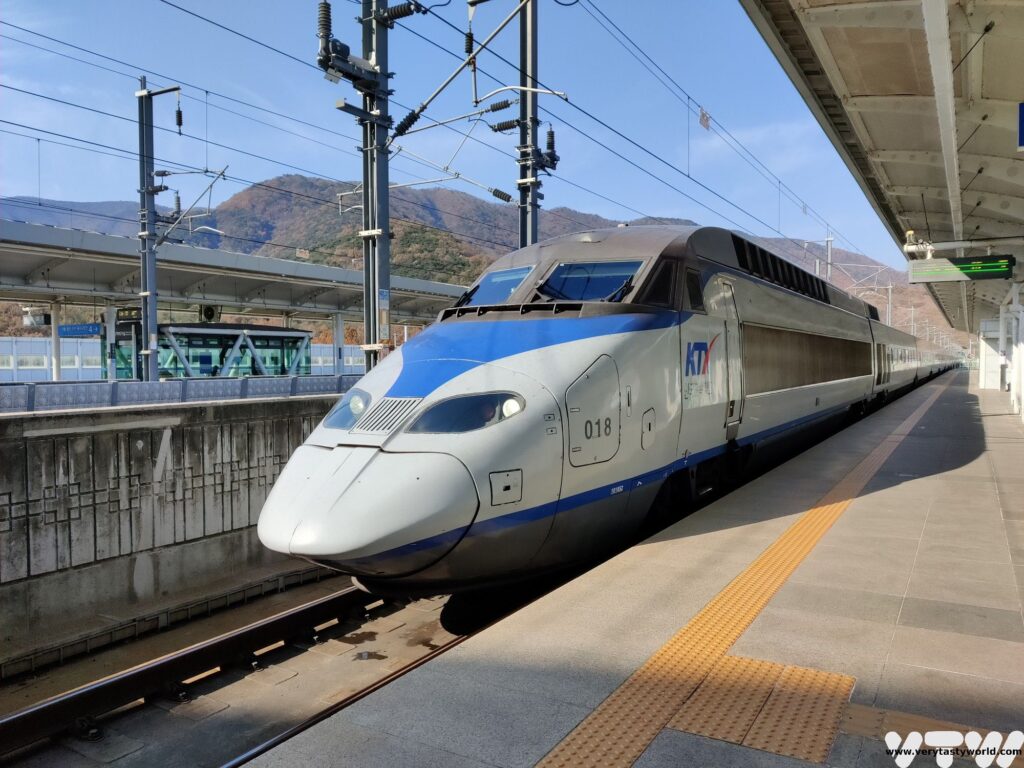
Although there are a vast number of historic sites to visit in the region, many of Gyeongju’s attractions are within walking distance of the city centre.
Most sites are free to enter but some have a small charge, usually around 2000 Won (about $2). Many sites can be visited throughout the day and into the evening but some have opening hours, which vary from location to location. The itinerary has a fair amount of walking, although you could use buses 10 and 11 which run on a loop and stop by some of the main attractions. Taxis are also available.
There are tourist information booths at many of the main sites. You can pick up leaflets and brochures which not only have handy maps and information about the site, but you can also collect stamps at various locations. Look out for the huts with the inkpad and stamp. Gotta collect ‘em all!
We got chatting to many of the people who were manning the booths – all had great English – and they were very keen to give us information about the site and advise on other historic areas to visit.
2 day Gyeongju Itinerary: Day 1
The first day’s attractions are within walking distance of the city centre, although you will certainly get the steps in. The main sites lie to the south of the city centre.

Day 1 Morning
The Daereunwong Tomb Complex
This complex is the site of ancient Silla burial mounds. They are tumuli that form a distinctive part of the landscape. They are considered sacred and should be treated with respect. This complex is free to enter and you can wander around. It contains the tombs of some 50 Silla Kings, including King Michu.
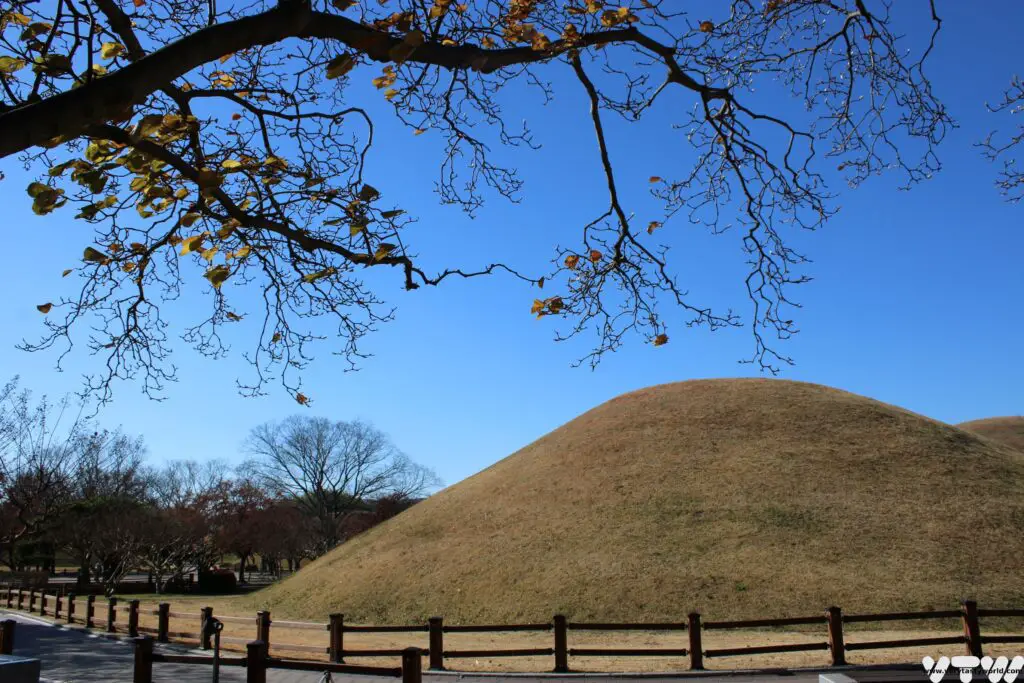
You can enter the Cheonmachong Tomb (a small fee applies). It is known as ancient tomb 155 and was excavated in 1973. Inside was a body wearing a gold crown which had been buried with a variety of artefacts.
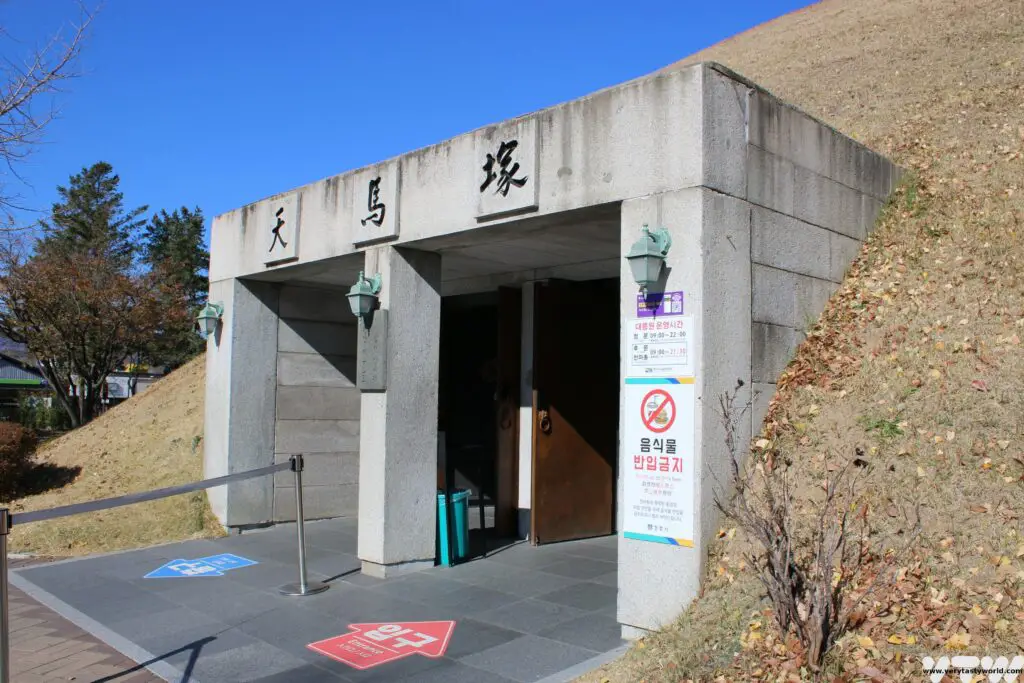
Many Silla artefacts are displayed inside the tomb and you can marvel at the craftsmanship of the intricate and delicate goldsmiths. The Silla were clearly a wealthy people and the crowns and jewels they wore reflected their status.
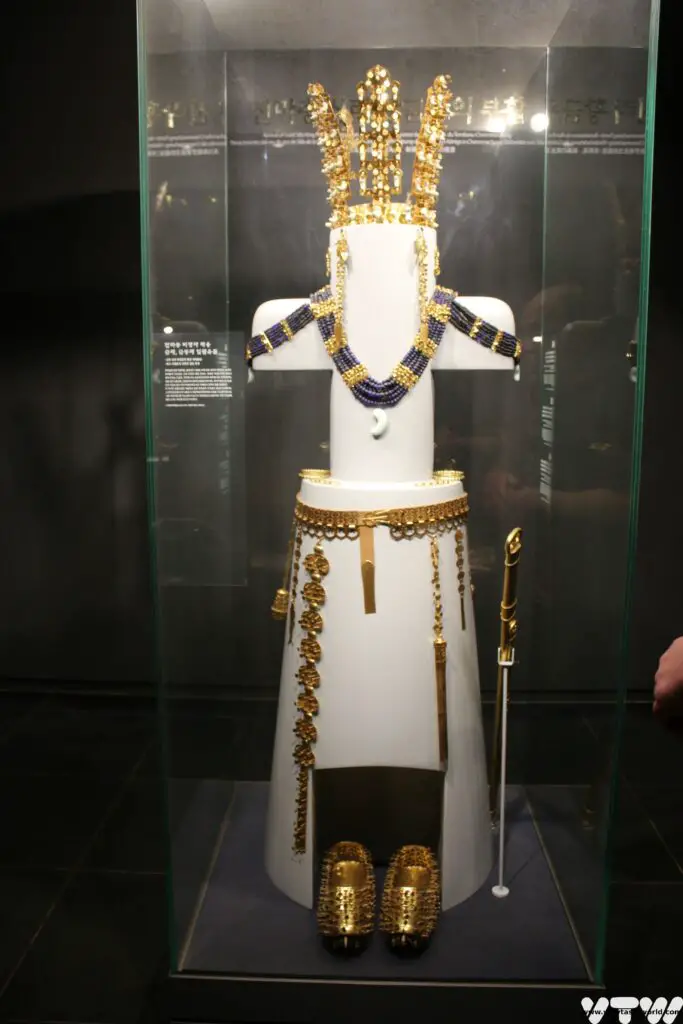
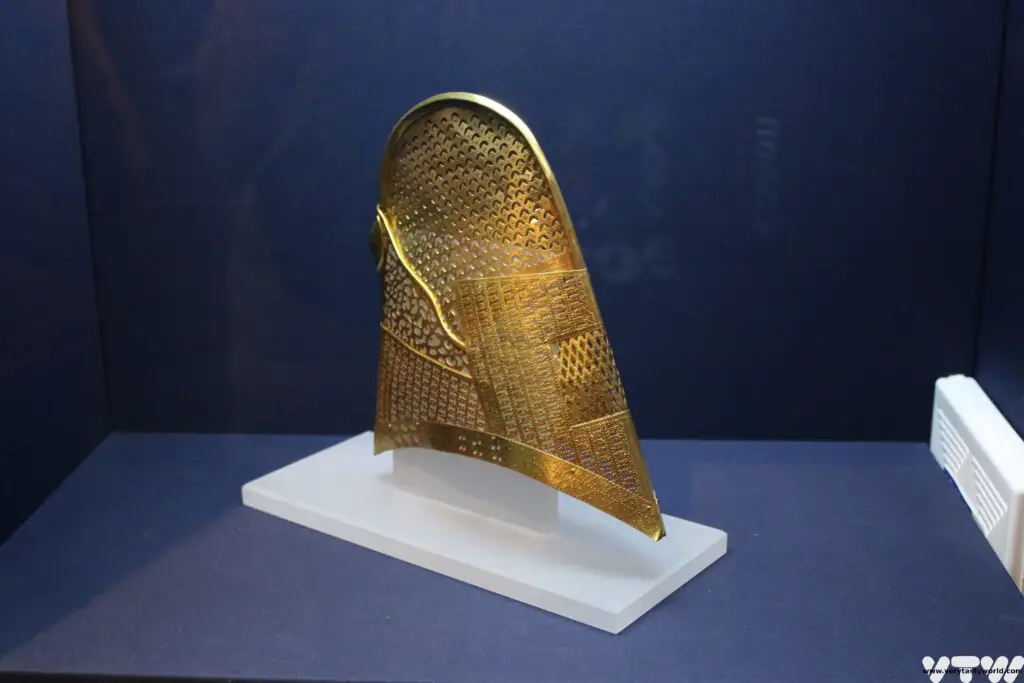
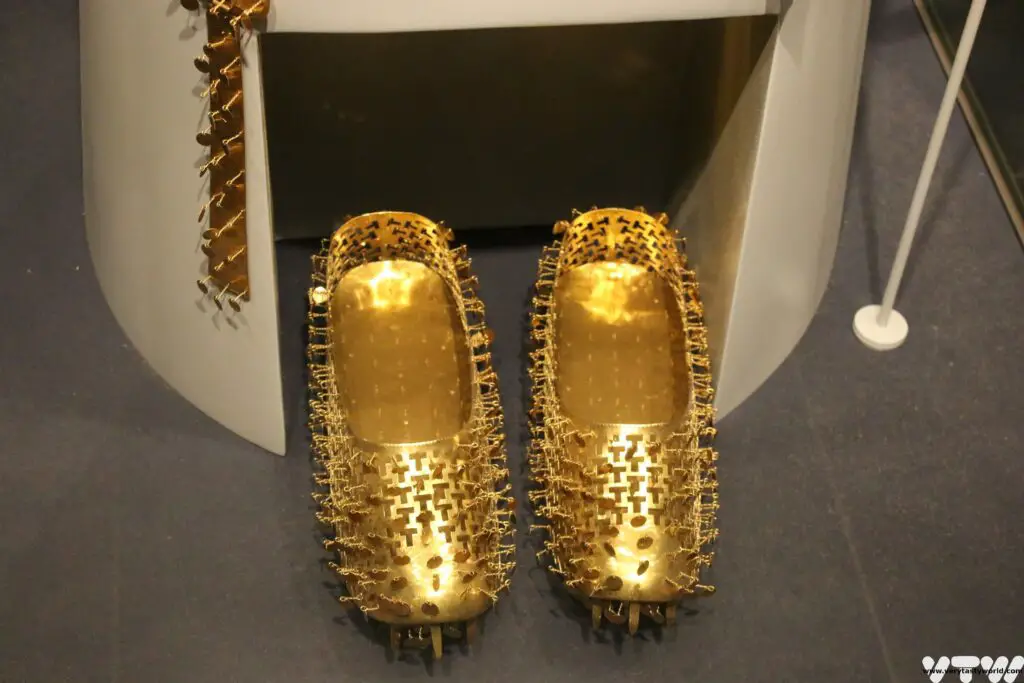
Exit this site to the south to visit the Gyeongju Eastern Historic Site
If you are feeling peckish, there are a number of restaurants in this area, located between the Daereunwong Tomb Complex and the Eastern site, where you can enjoy a snack or a light meal.
Gyeongju Eastern Historic Site
There are a vast number of fascinating sites to explore in this area, most of them are eminently walkable.
Cheomseongdae
This is the oldest surviving observatory in Asia (possibly even the world), constructed by the Silla in the 7th century. It is nearly 10 metres high and would have been used for astronomical observations. The square window halfway up the tower was also the entrance. The tower is comprised of 365 stones to represent each day of the year. It is thought that the number of the stones, and their placement, in the tower may represent astronomical figures but no one really knows what these might be so this theory isn’t certain.
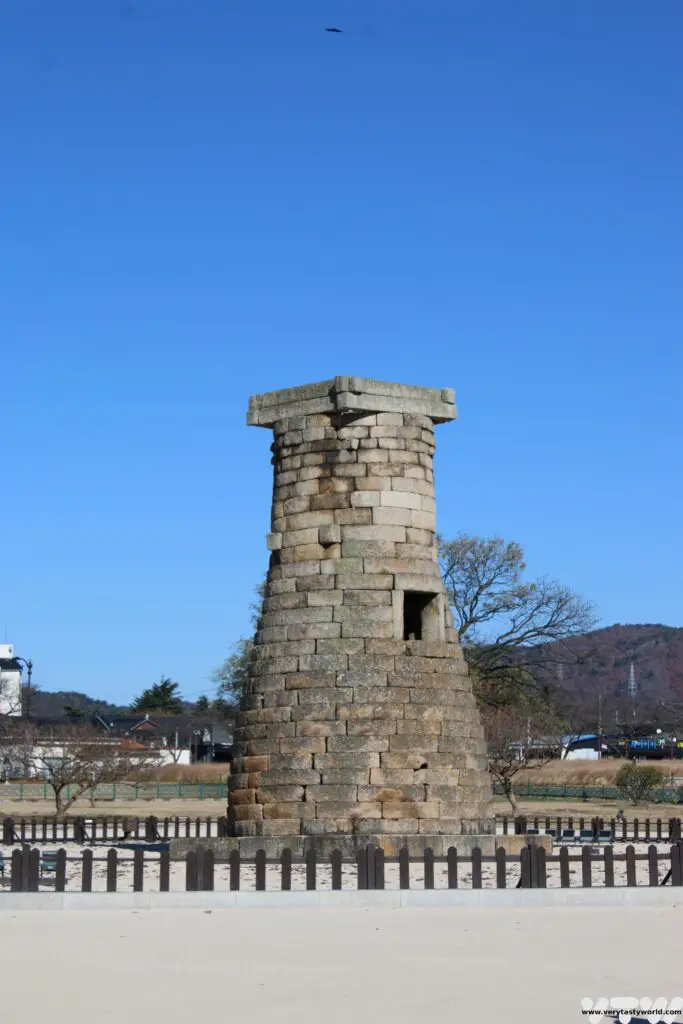
As you follow the main track, take a right turn just past Cheomseongdae to walk through a pleasant path to reach the…
Gyeongju Gyochon Traditional Village
This small village has a number of houses built in traditional style, some of which are residential properties but some are accessible to enter. Many of these date from the Joseon dynasty (1392 – 1897) rather than Silla. Of particular interest is the Confucian school which is still in use to provide education of Confucian practice.
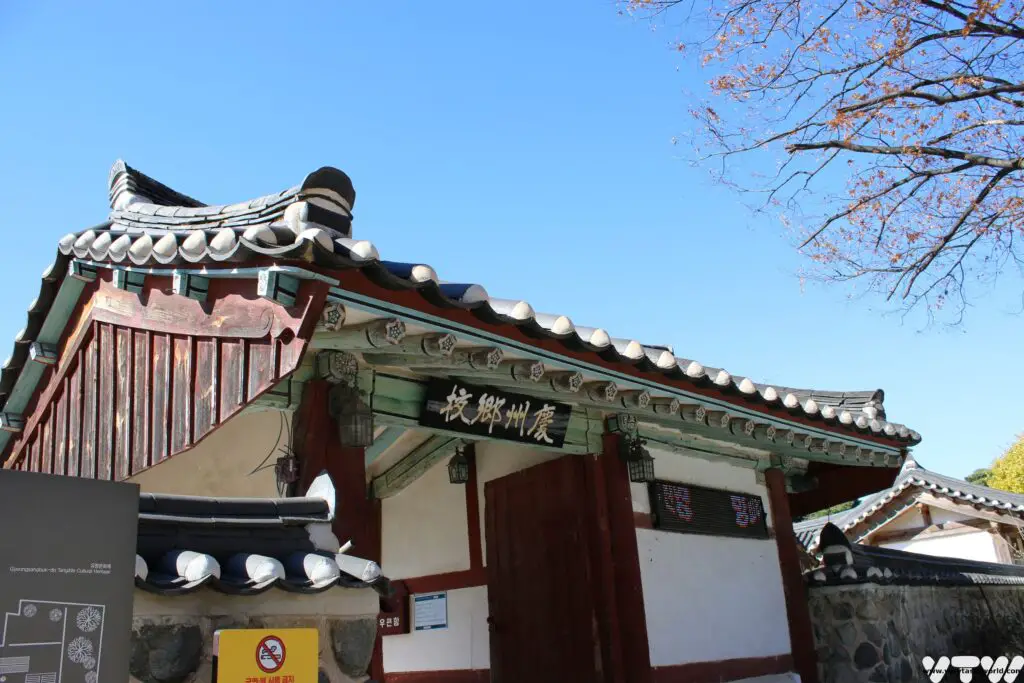
The Historic House of Rich Man Choe is a house dating back to approximately 1700, although is it is a reconstruction. The Choe family were rich through 12 generations and this house is representative of the buildings of the nobility of the Joseon Dynasty. Nearby the traditional village is the Jaemaejeoung well, situated by General Kim Yusin’s house. Next to the well is a tombstone dedicated to King Gojong (a Joseon king).
There are a number of cafes and restaurants here if you fancy having a bit of a rest from sightseeing. This is a good place to enjoy a spot of lunch.
Day 1 Afternoon
Woljeong Bridge
Moving further south from the traditional village, you will arrive at the river and the spectacularly beautiful Woljeong Bridge. This is a reconstruction of a Silla bridge that was originally built during the reign of the 35th Silla King, King Gyeongdeok.
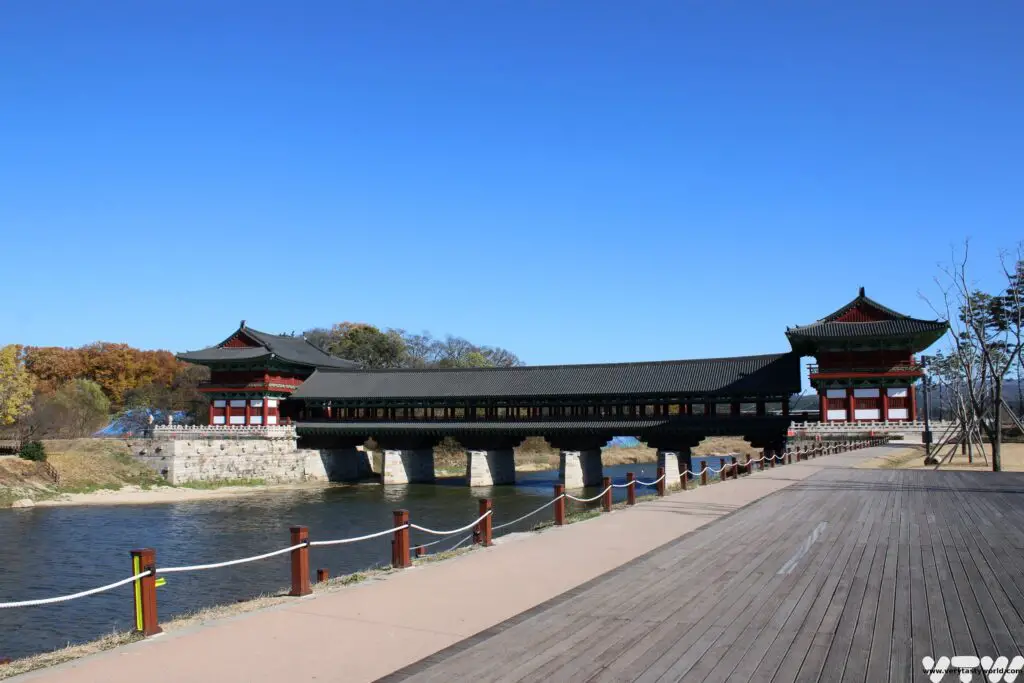
The bridge is covered all the way across, its pillars and roof highly decorated in red, green and blue.
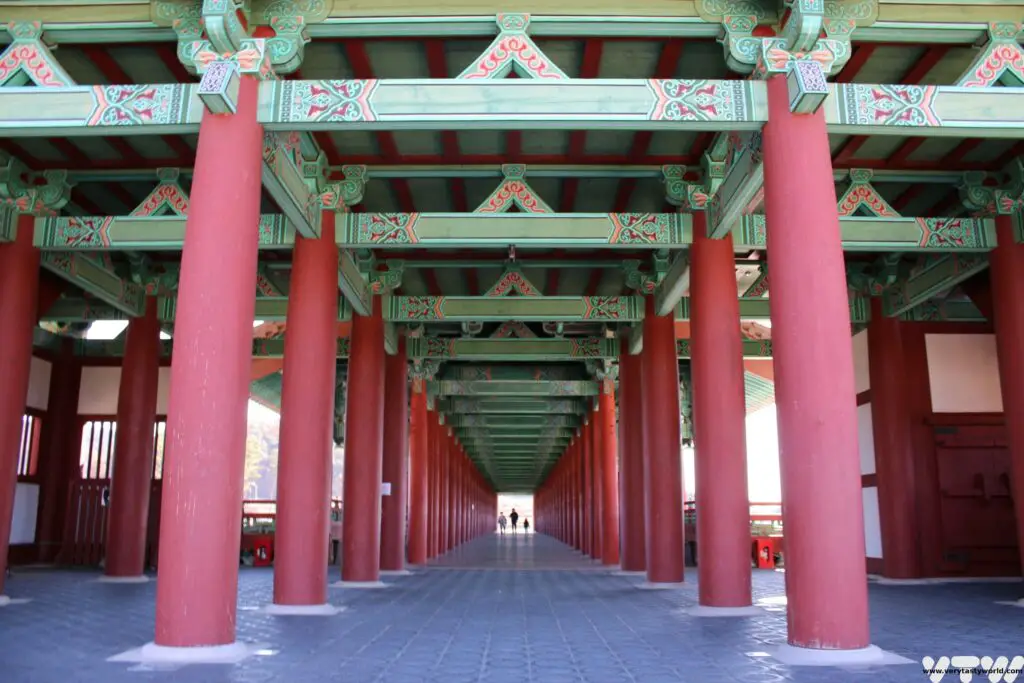
You can also climb the steep steps into the bridge towers to view exhibitions which include a number of historic artefacts.
Oleung Five Tombs Site
Beyond the bridge you can turn right and walk along the riverside until you arrive at a walled complex. Follow the wall along the river and turn left along the main road and follow the wall to reach the entrance. This site has a small fee to enter. It has four earthen mounds and a round grave. They are the tombs of a single king, King Park Hyeokgeose, who founded the Silla Dynasty.
He apparently ruled for 62 years and after he died, according to a legend, his body was ripped into five pieces and fell back to earth from heaven. His people tried to bury him in a single tomb but a giant snake prevented them from doing this, so five tombs were constructed. The tombs have not been excavated.
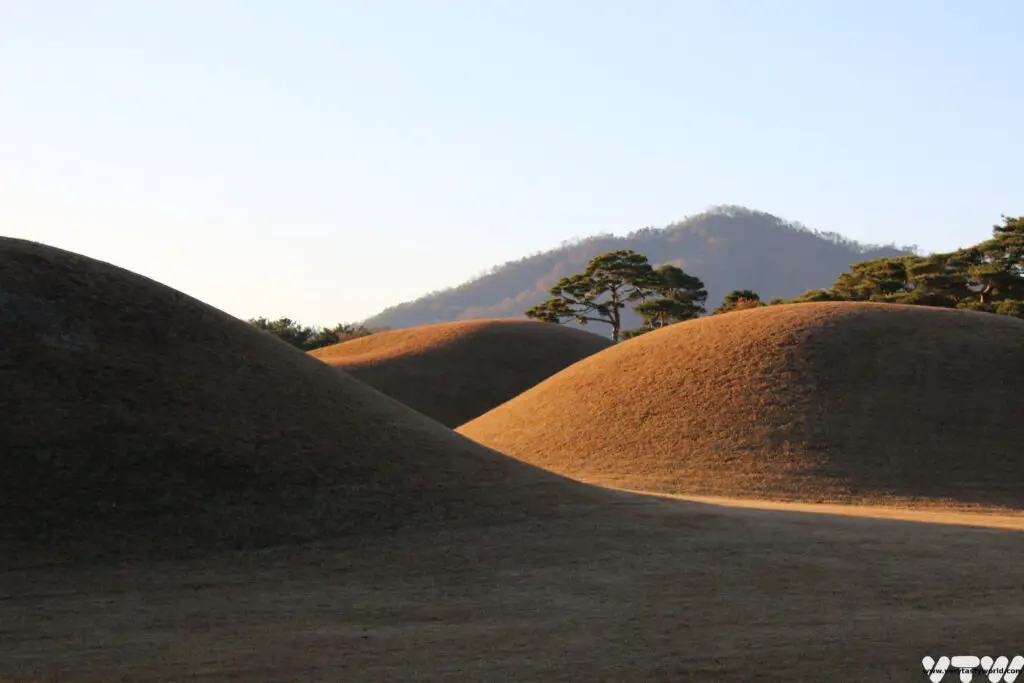
A lovely foodie moment happened after had left the site and were making our way back to the bridge. We were beckoned by a man who wanted us to meet his family and show us how they made kimchi. We were invited into his courtyard and he showed us a bathtub of cabbages which had been halved and brined. He, his sister and 84 year old mother were washing the cabbages. The following day each cabbage leaf would be smothered in a deliciously spicy paste and fermented. It was such an honour to be invited to this delightful family’s home and to see the kimchi making process.
Wolseong Palace
You can walk back along the river, cross the bridge and turn right at the traditional village to go across the park and see the remains of Wolseong. This was a Silla palace that was originally constructed in the 2nd century. No buildings can be seen, save a small ice-house, but the moat has recently been restored.
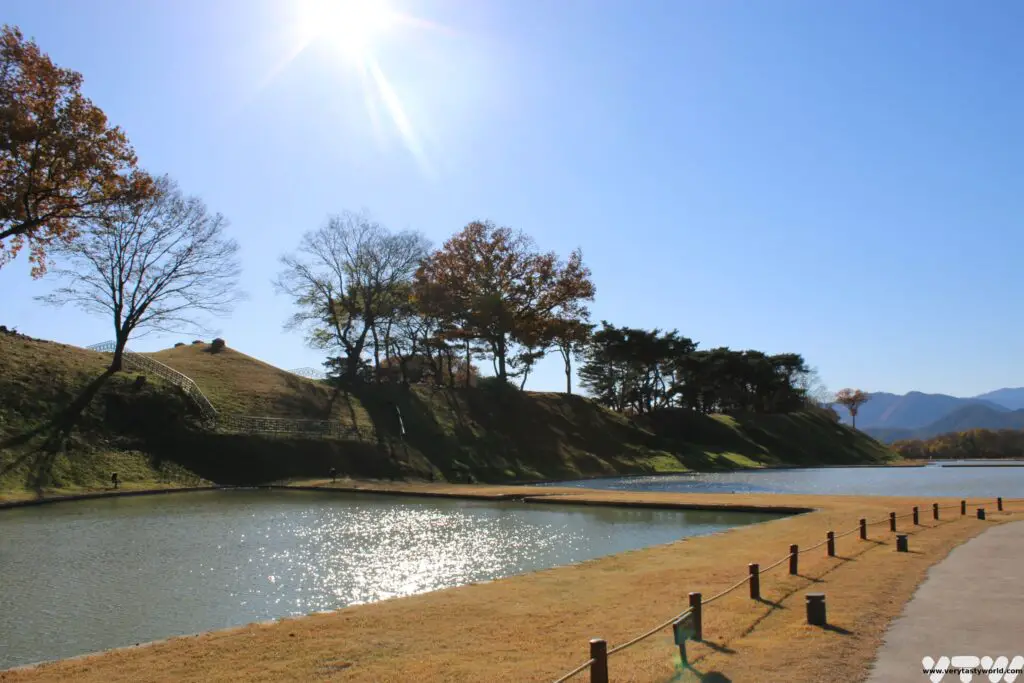
Donggung Palace and Wolji Pond
Follow the moat around and bear right. After exiting the park turn right and walk along the road, then cross to the Donggung Palace and Wolji Pond. This was a palace that was used by the Silla crown prince. The site has a beautiful pond (Wolji means “pond that reflects the moon”) which was constructed in 674 CE and is set in a lovely garden.
There is a small fee to enter the grounds. It’s possible to walk round the lovely lake to view its three islands. There are also some reconstructed lakeside buildings. It’s easy to imagine this as a place of leisure for the crown prince. It was extremely pretty, even in winter.
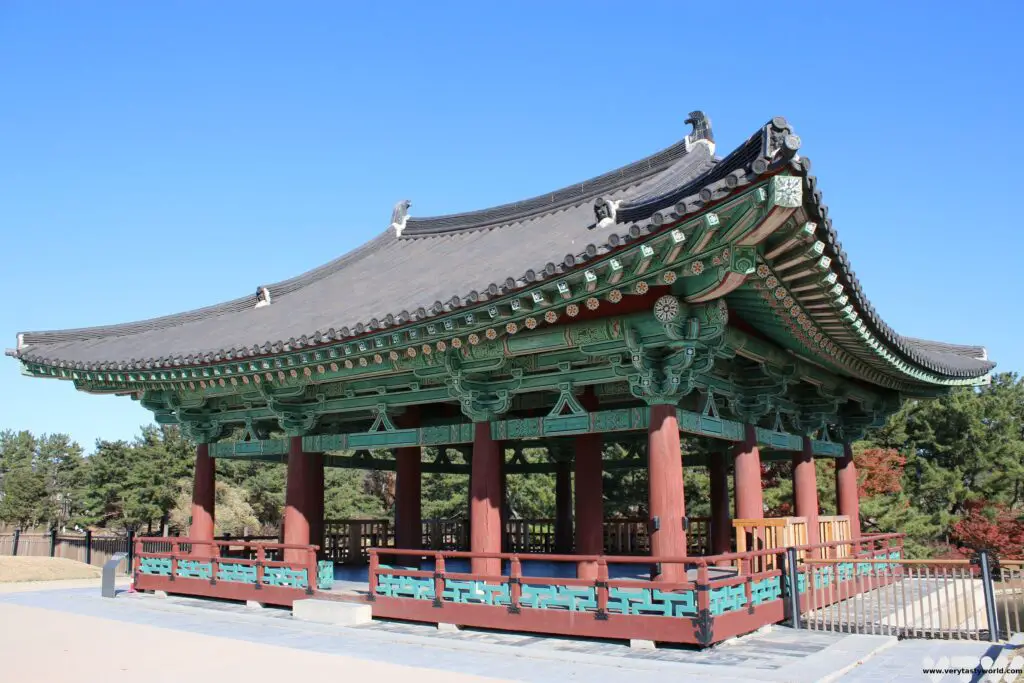
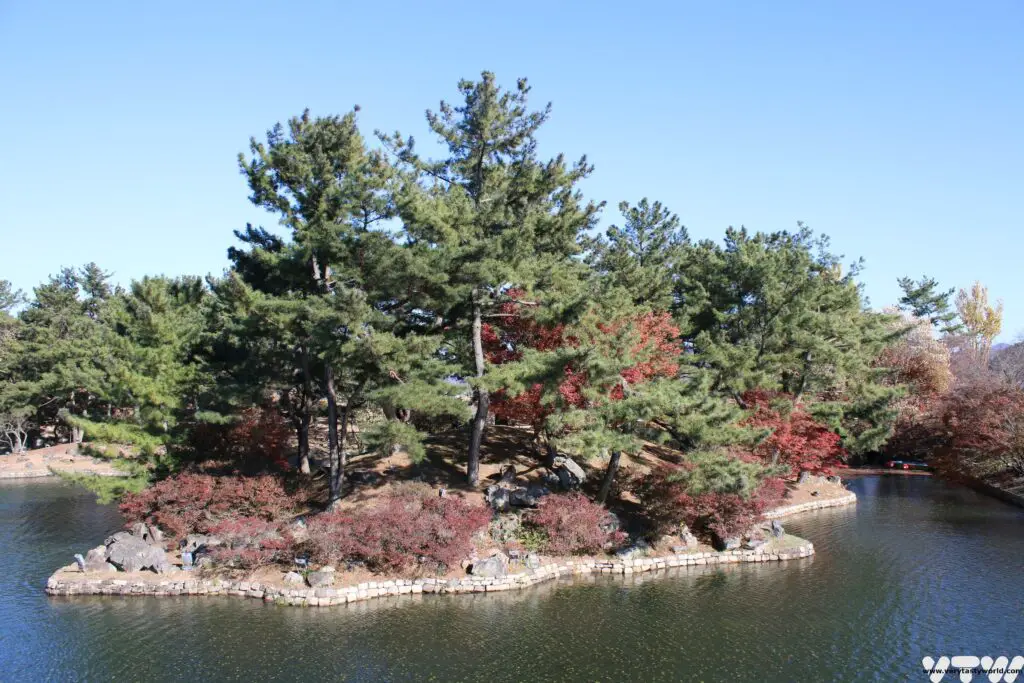
2 day Gyeongju Itinerary: Day 2
On the second day we suggest exploring some of the important historic sights outside the city.
Day 2 Morning – Bulguk-sa and the SeokGuram Grotto
You can catch a bus to visit the UNESCO sites of Bulguk-sa and the SeokGuram Grotto.
Bus numbers 10 and 11 go to Bulguk-sa (number 11 from the city centre is the quickest route) on a loop route.
Bulguk-sa is a historic temple complex set in a beautiful garden and is a triumph of Silla architecture. It was originally built between 751 and 774 and served as the centre for Silla Buddhism and was a place for prayer to protect the country from foreign invaders.
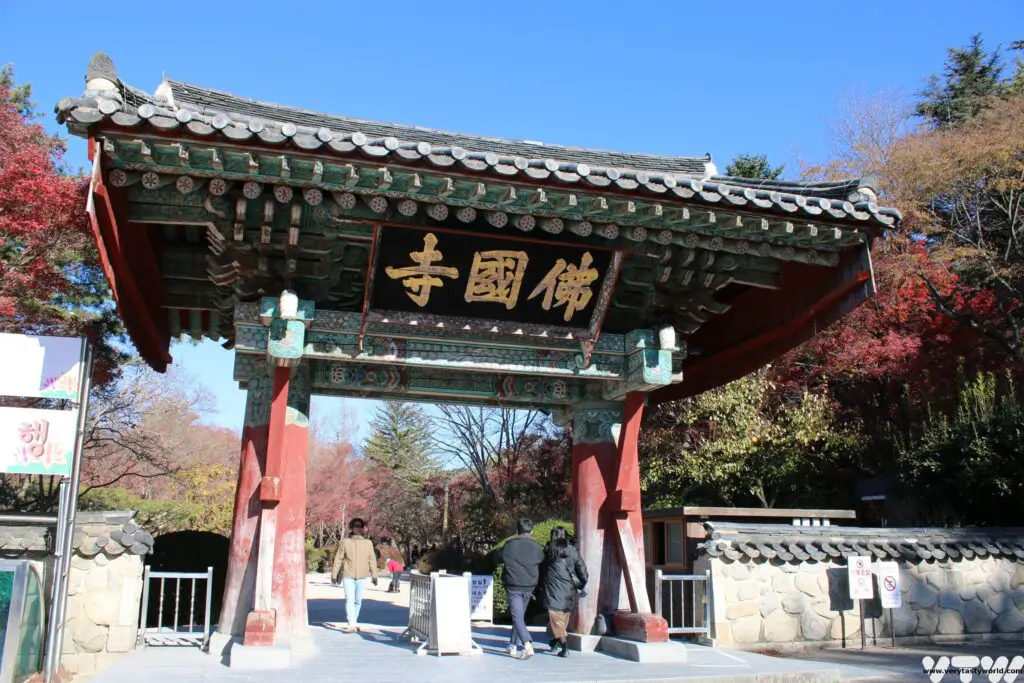
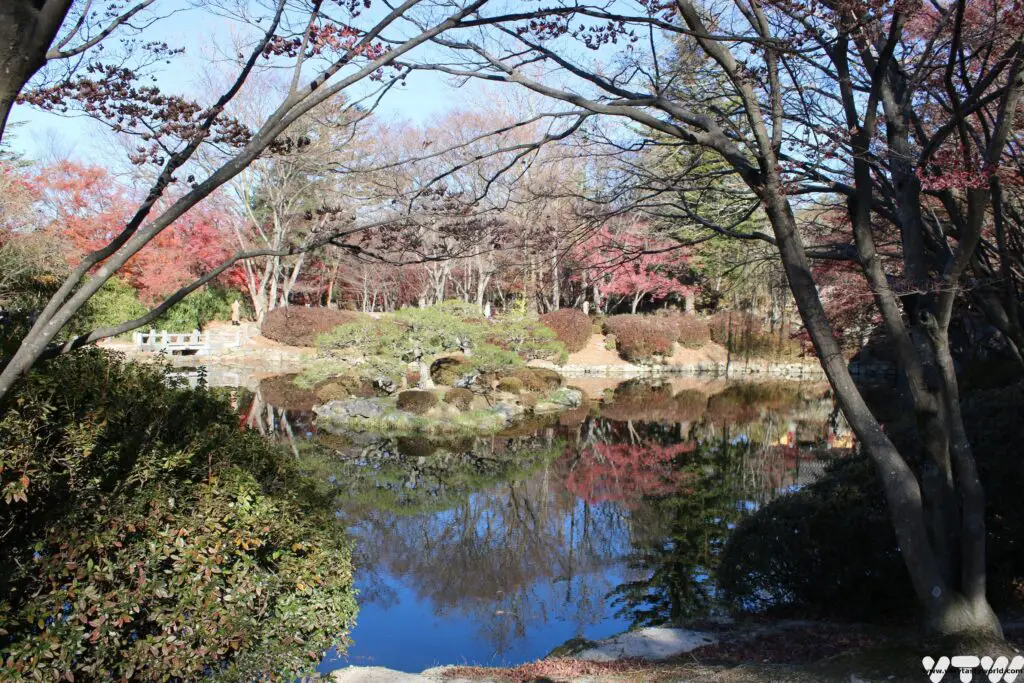
Unfortunately the buildings were destroyed by Japanese invaders in 1593 and have been rebuilt. The main Buddha hall was rebuilt in 1765.
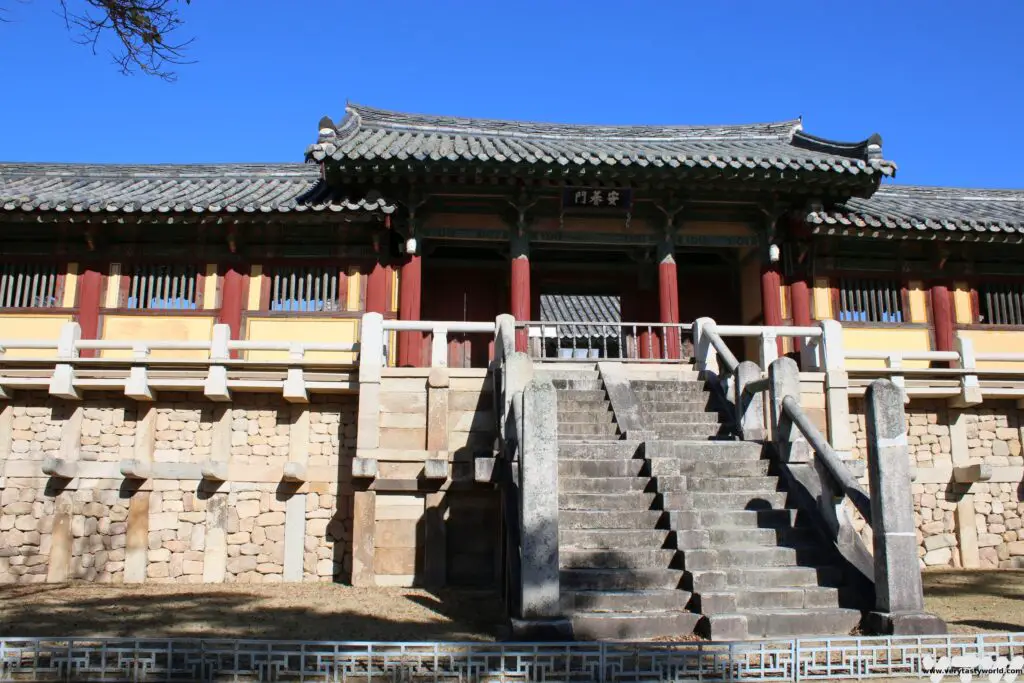
In front of the hall are two pagodas which survived the destruction are considered to be national treasures.
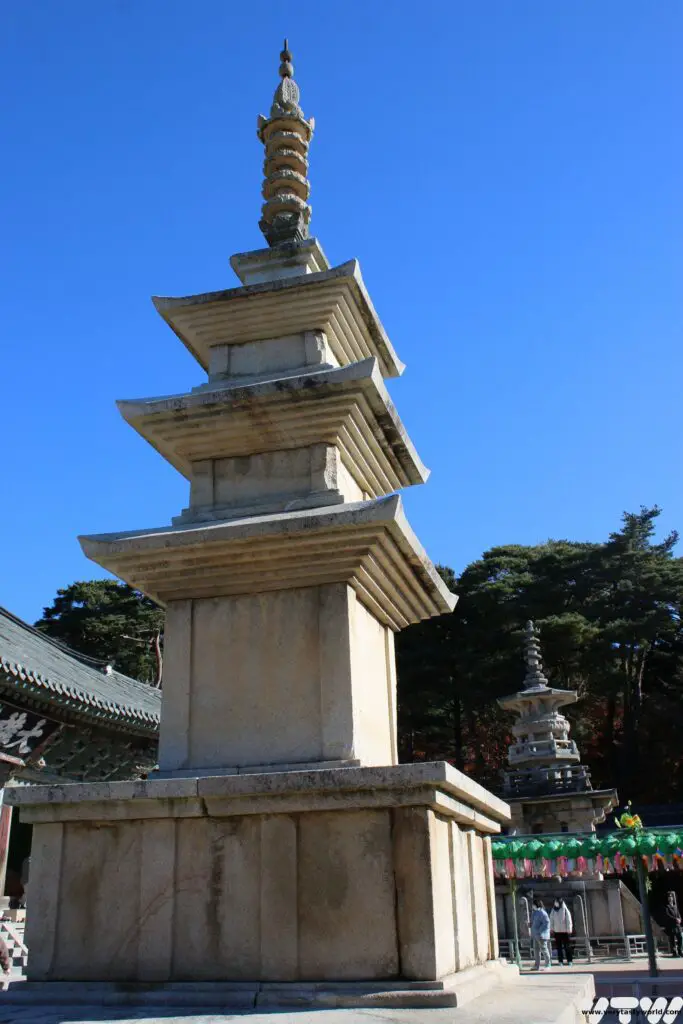
Dabotap , the Many Treasures Pagoda, is a typical Silla construction. The more ornate pagoda is Seokgatap, the Sakyamuni Pagoda, and it’s more reflective of the architecture of the neighbouring Baekje kingdom. In 1966 archaeologists discovered a copy of a sutra inside the pagoda which is an absolute treasure, considered to be amongst the world’s oldest woodblock printed books.
There are numerous other temple buildings and gardens to explore.
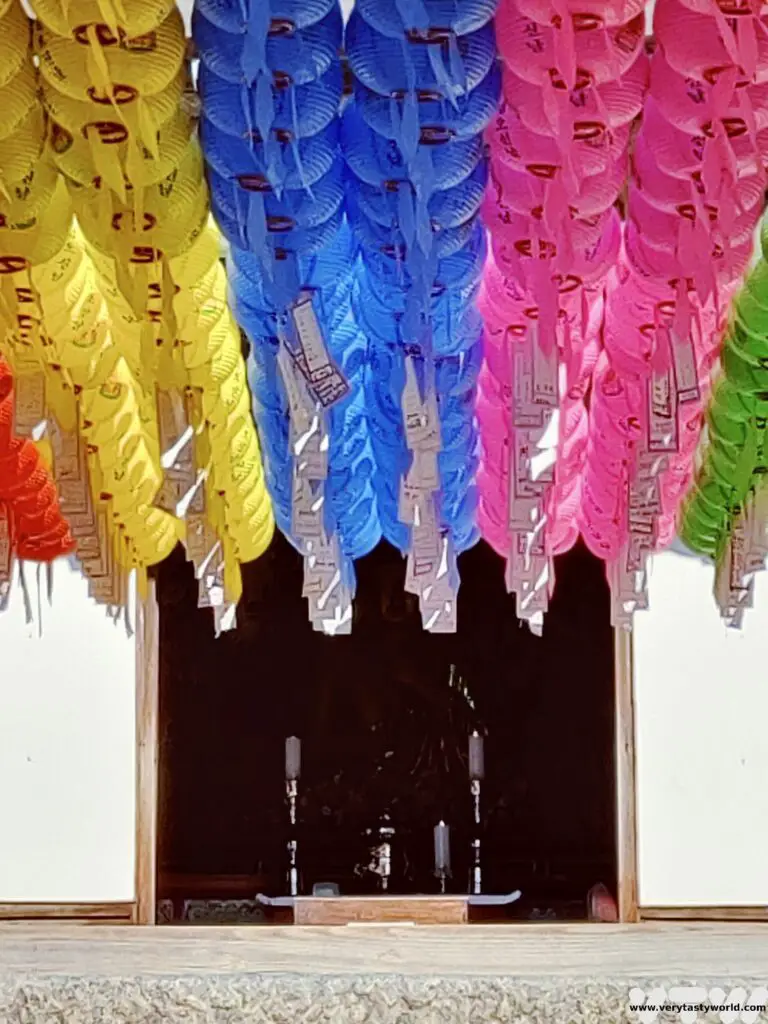
Bus number 12 will take you to the SeokGuram Grotto. If you’re feeling energetic, you can walk up the hill – it’s 2.2km to reach the grotto – but we’d recommend taking the bus as the road doesn’t have a great path for pedestrians. The bus stop to the grotto is at the bottom of the hill on the main road opposite the tourist information centre in the Bulguk-sa lower car park. The tourist centre will be able to give you a bus timetable.
The SeokGuram Grotto is another world heritage site. This is a cave temple, built in 751CE by the Silla people, which contains a Buddha. It is 3.23m tall, sculpted in granite and is considered to be one of the world’s most exquisite heritage carvings. The Silla cleverly designed the cave on a hillside where a stream runs underneath, perfectly regulating the humidity within the cave.
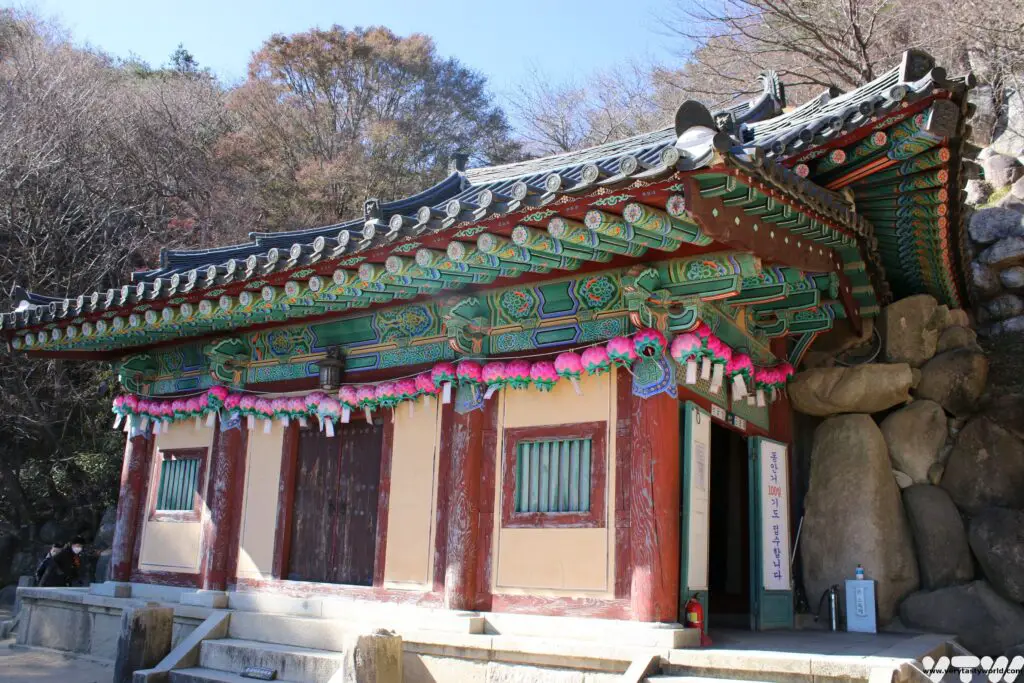
Visitors can walk into the cave and view the Buddha which is located behind a protective screen. There are deities that guard the main Buddha, two on each side. Photos are not allowed.
It is a short walk of around 1km along a pleasant, forested path to the SeokGuram Grotto from the entrance. At the very top of the stairs by the car park there is a traditional bell, which you can ring for a small fee of 1000Won. The money goes to charity.
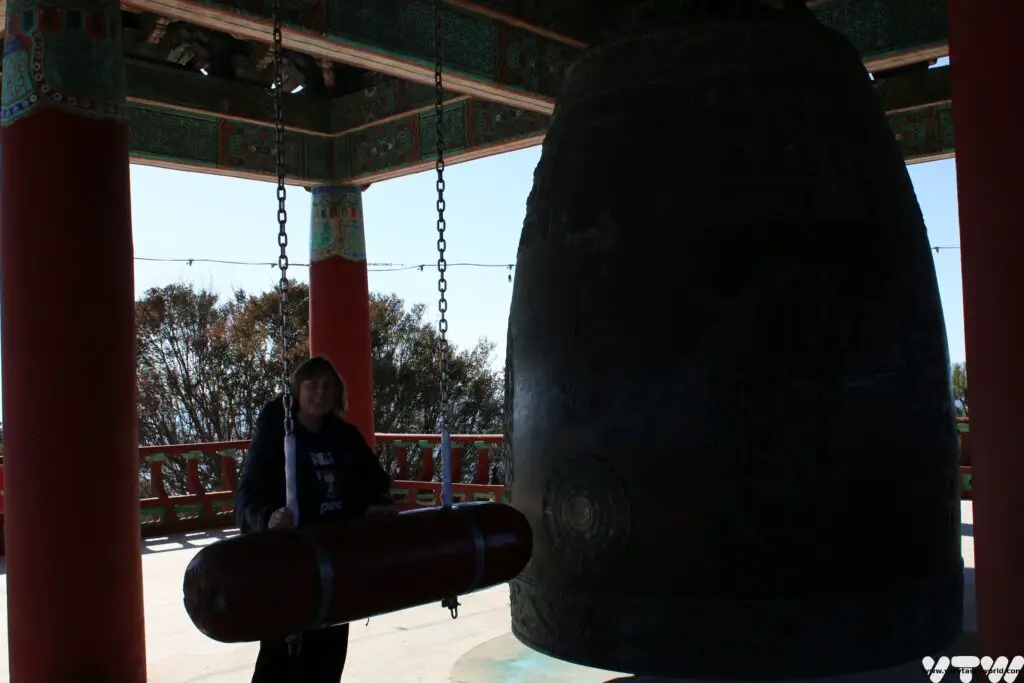
Day 2 Afternoon Choices
There are choices for how to spend the afternoon.
On the way back, the buses pass by the Lake Bomun resort area. If you looking for more modern activities Gyeongju has a popular theme park which is a major draw for younger people in particular. This area also has a K-Pop museum and a museum of contemporary art. You will pass by the park on the no 10 or 11 buses and they both stop there.
Alternatively you could spend the afternoon browsing the Gyeongju Museum (open 10m-6pm, free entry) which has extensive permanent and temporary exhibitions about the Silla.
The history gallery and Silla art gallery are notable highlights, both of which exhibit precious artefacts.
Evening at the Gyeongju Eastern Historic Site
We recommend revisiting the Gyeongju Eastern Historic Site in the early evening. It’s a place where locals and visitors spend time relaxing in the park. Kite-flying is a popular activity.
Many of the historic sites are lit up after nightfall and it is especially worth walking back to Cheomseongdae and the Woljeong Bridge.
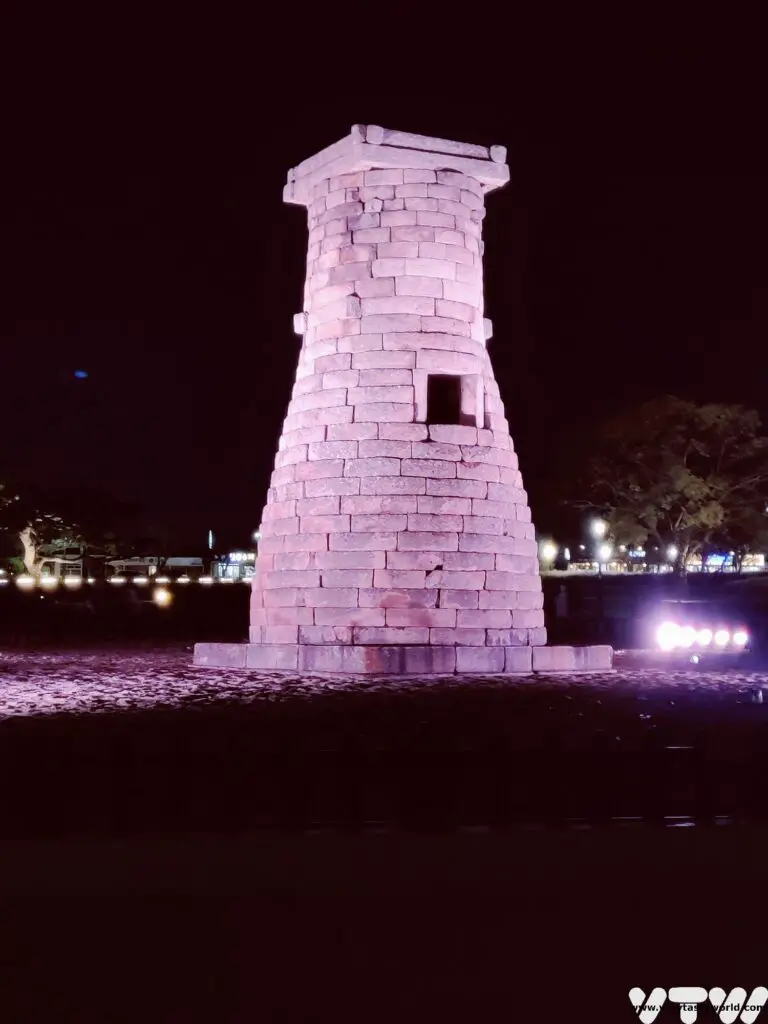
They are both impressive in the daytime but spectacular at night.
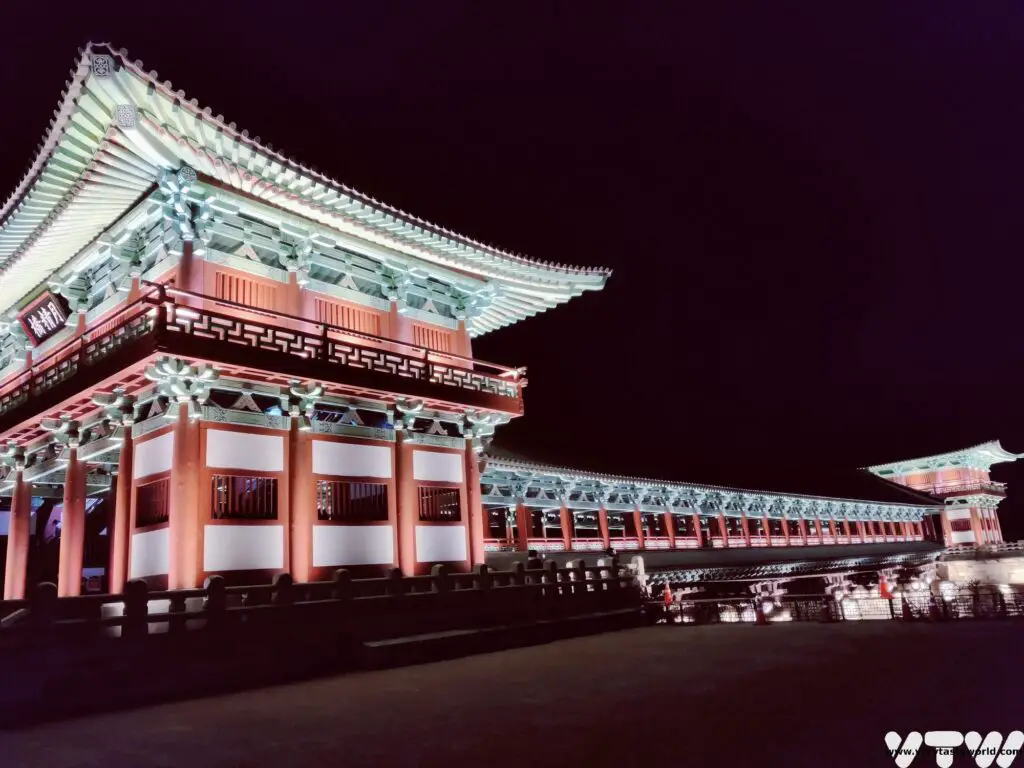
Gyeongju for Foodies
We ate very well all over Korea and the cuisine in Gyeongju was no exception. There are a plethora of restaurants in the city and around. Prices are very reasonable – most of the meals we enjoyed were around 10,000 Won (~$8) or less per person. There were a couple of excellent restaurants in the city centre or close to the Eastern Historic Site.
Sukyoung sikdang gyeongju on Gyerim-ro, opposite the The Daereunwong Tomb Complex, offered a home-cooked bibimbap (rice bowl) with lots of banchan side dishes and broth. This is a great option for vegetarians because all the dishes were vegetable based except for an additional order of fish (which we did order and enjoy). The sides comprised omelette, mushroom, water kimchi, radish kimchi, blanched vegetables, tofu. Barley tea was also served because it was a cold day. The proprietor also made his own makgeolli – a kind of rice wine.
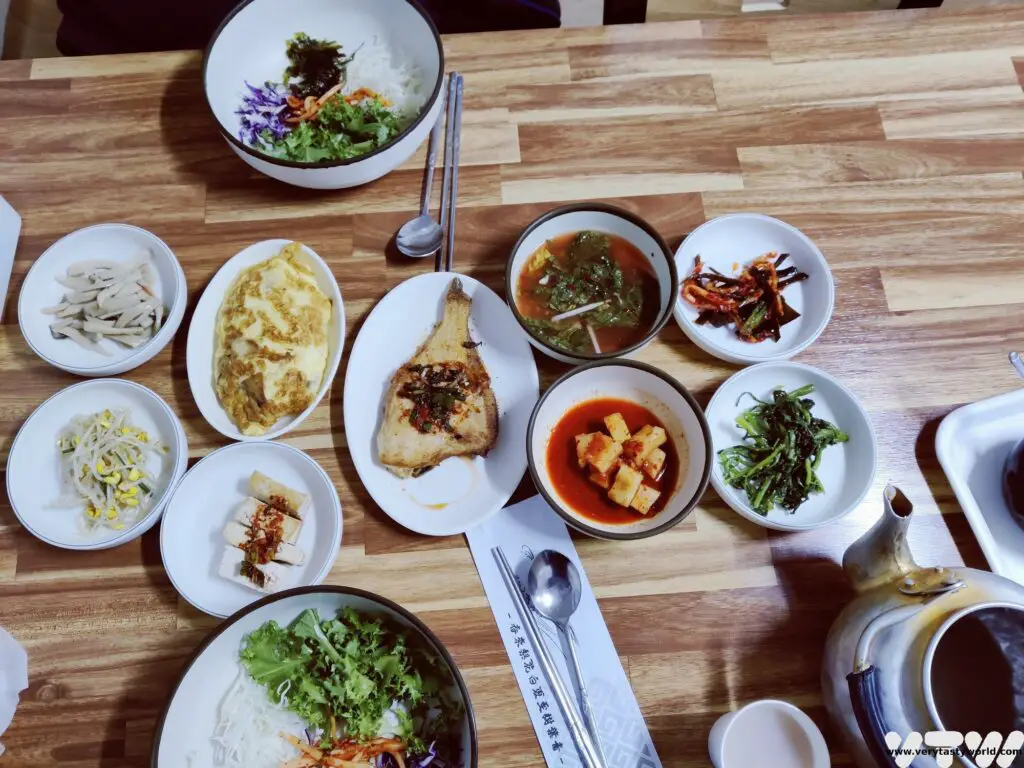
We stopped into 한식집 숟가락 젓가락 located on Taejeong-ro791 Becon-gil because we saw its sign with a huge number of dishes. This wonderful little restaurant offered a feast that was an absolute bargain. You choose a stew and then get rice, 11 side dishes and barley tea. All for 8000 Won each (about $6). And it was utterly delicious.
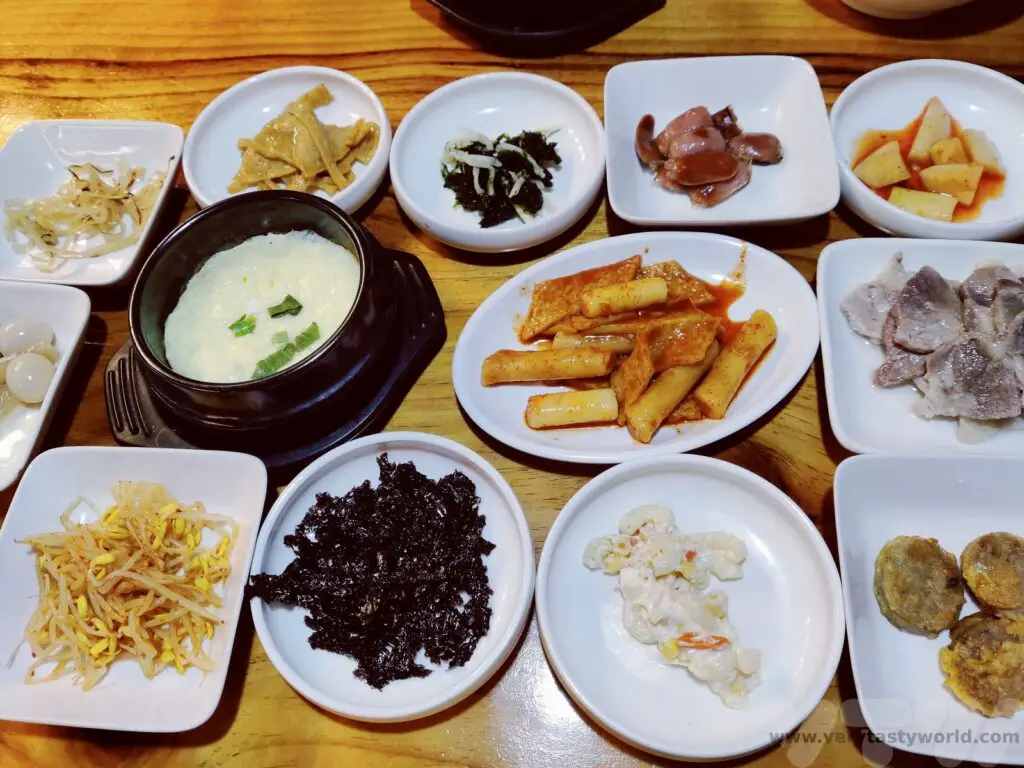
In town there is a dumpling restaurant 울타리없는만두 on Dongseoung-ro. The proprietor speaks good English and is delightful. We enjoyed two different types of dumpling. He steams them outside the shop – puts the dumplings in a basket, passes them through the window into the steamer, whereupon a rush of steam engulfs the side of the street and the dumplings cook in double quick time.
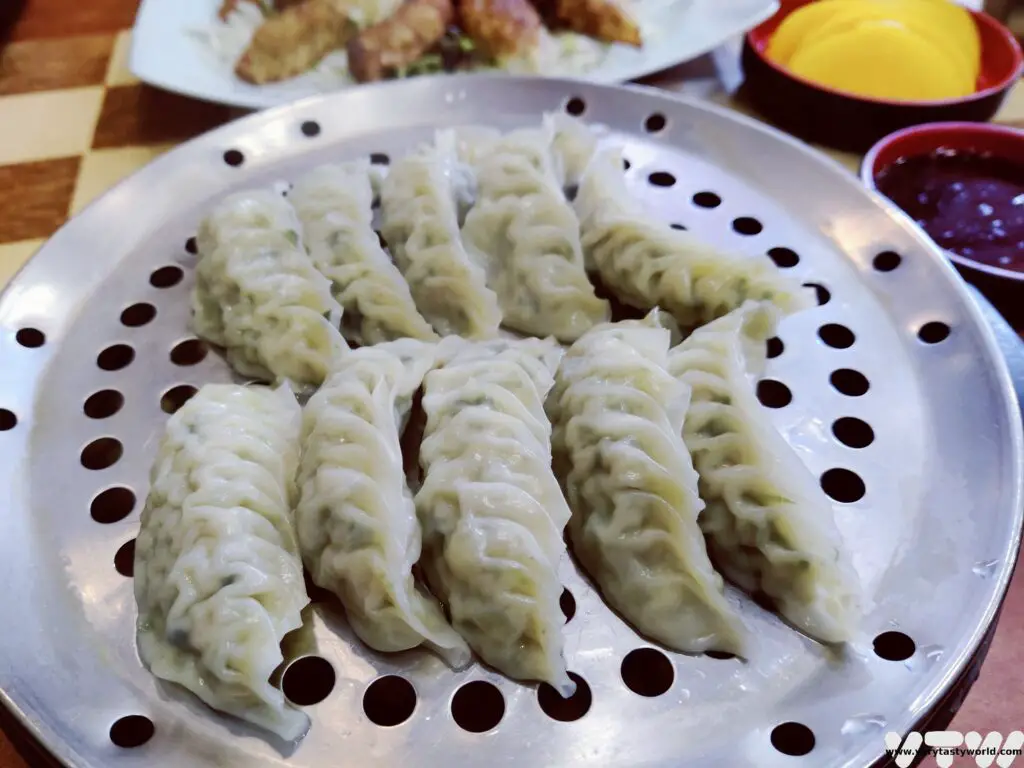
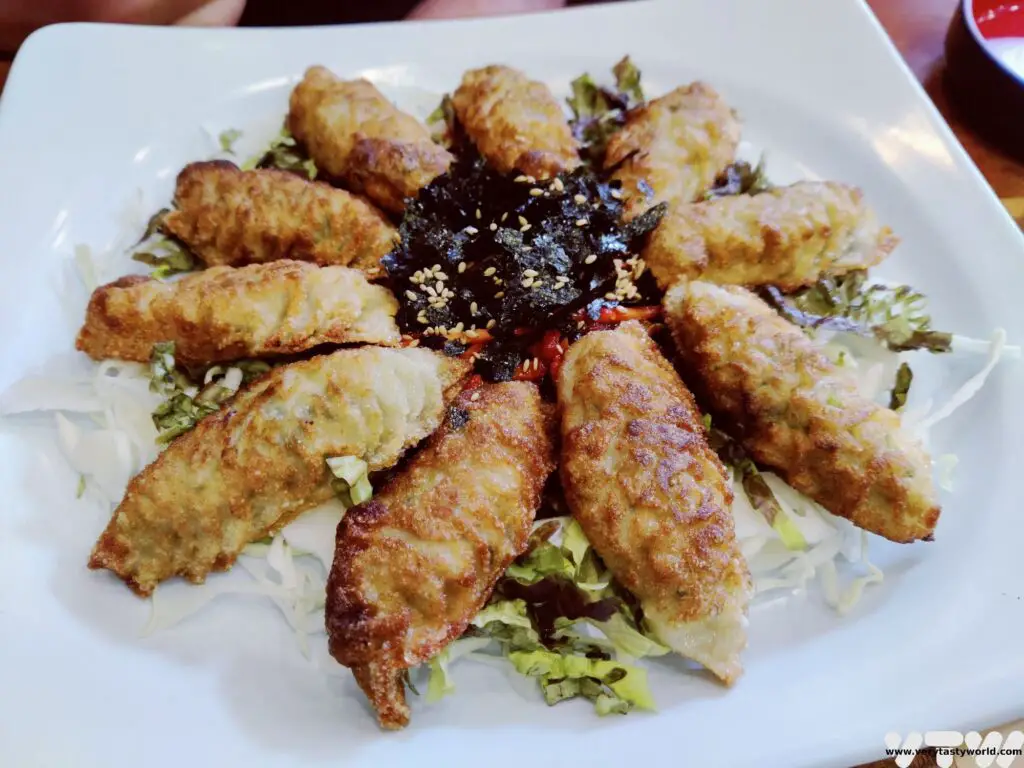
Seongdong Market, opposite the old railway station has a number of stalls if you are seeking street food. And we always advise seeking street food in South Korea – there are so many amazing dishes to try. The market also has an area with some restaurants that also serve a variety of banchan.
Gyeongju Specialty Food
Gyeongju has its own special bread known as hwangnam-ppan. We found it quite difficult to buy in individual portions as it is usually beautifully packaged in presentation boxes. (We were backpacking and didn’t feel that if we were carrying a beautifully packaged presentation box it would survive the rest of the trip!) However, one bakery sold us two single packs. Hwangnam-ppan is a sweet bread, which tastes like a scotch pancake. It’s soft and spongy in texture. The filling is a smooth, sweet red bean paste.
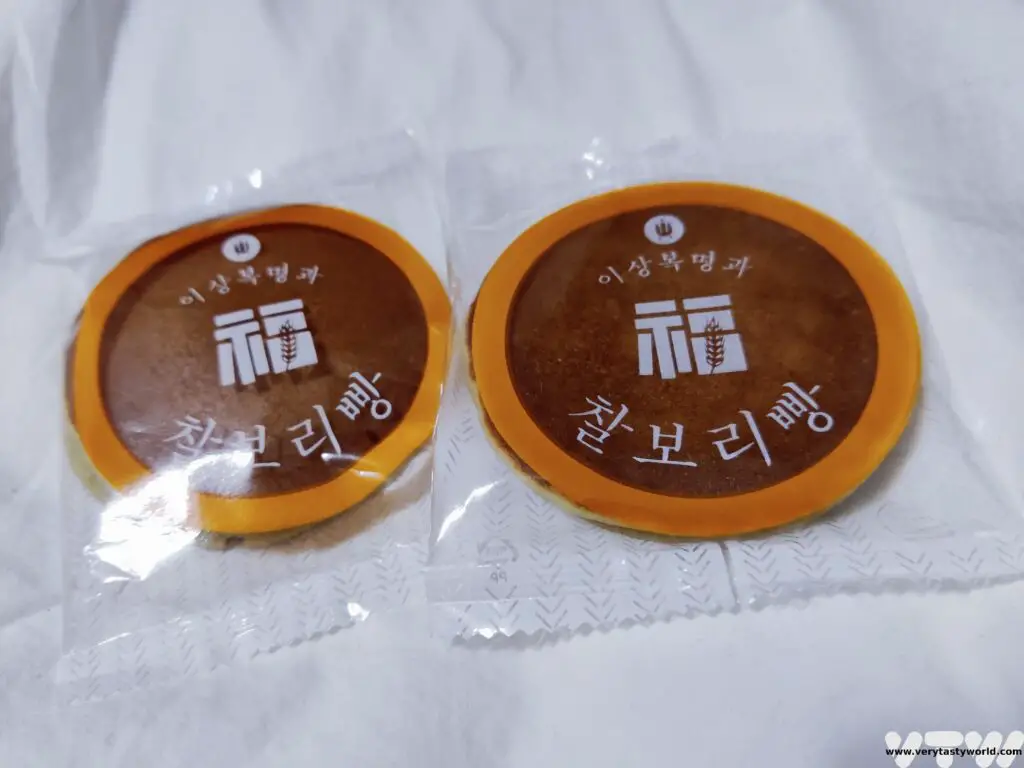
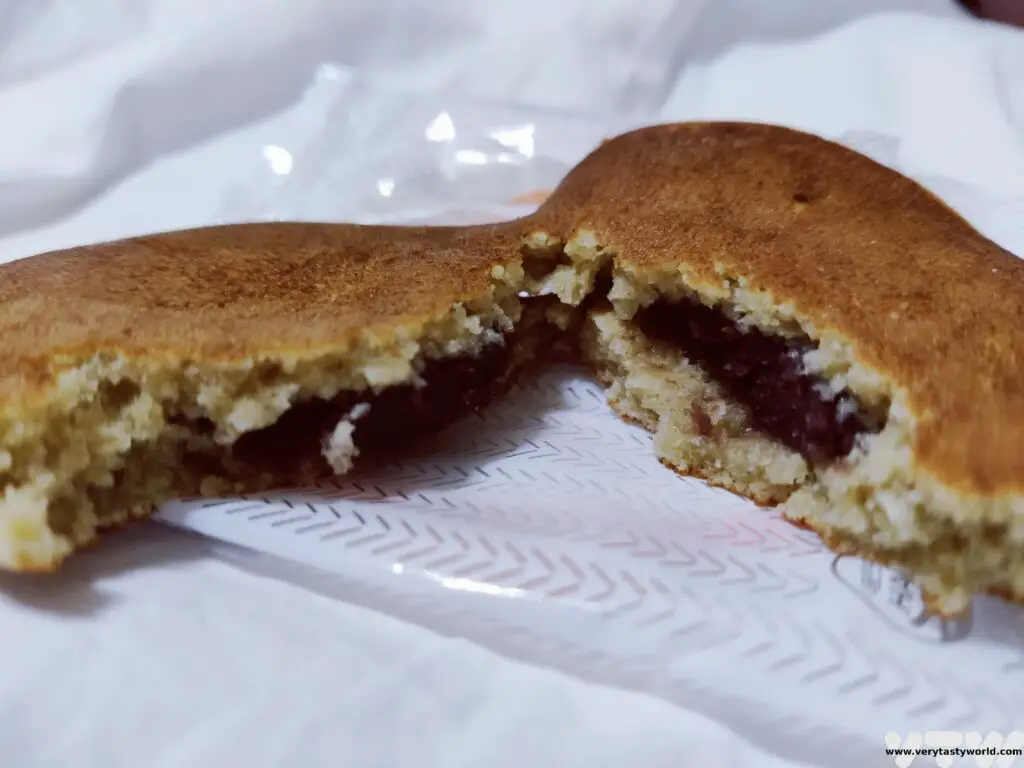
So, how did we do with collecting those site stamps? This is what we covered in two days.
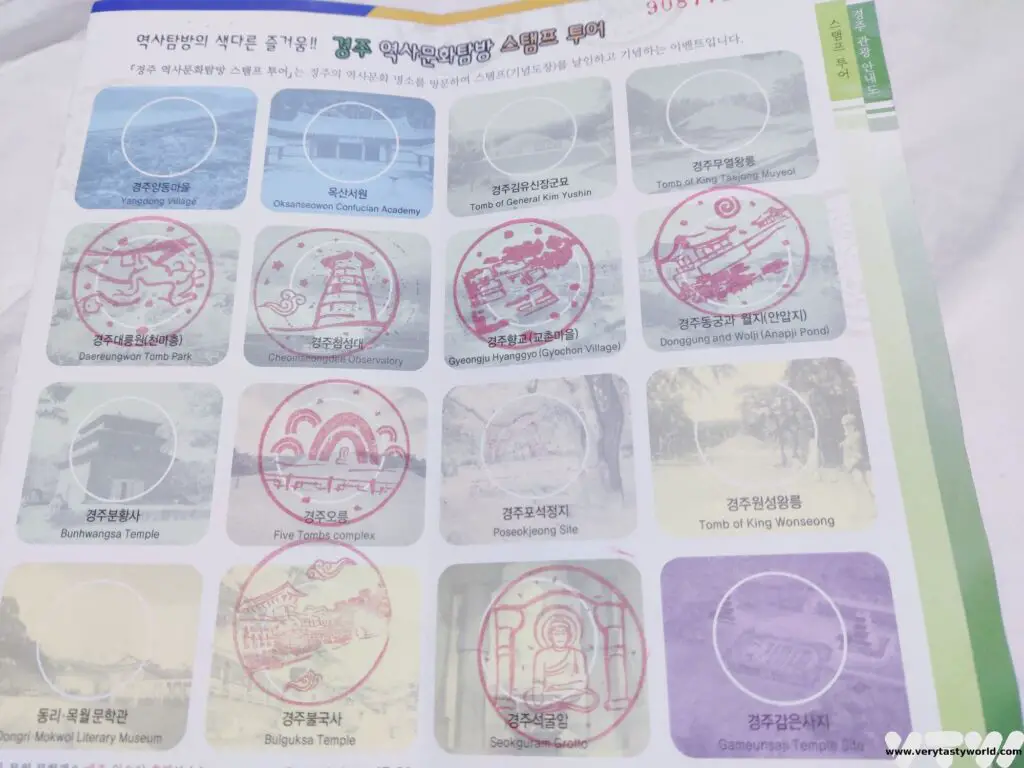
We can’t recommend Gyeongju highly enough. As you can see, our two day Gyeongju itinerary gave us a flavour of the highlights but there are many, many more places to see. We want to return and spend much more time exploring this remarkable region.
Related Posts You May Enjoy

- World’s Best Breakfasts -Breakfast of Champions!
- A One Day Hanoi Itinerary
- Mekong Meanderings
- A Chiang Rai Temple and A Country Retreat
- A Chiang Mai Tour in Northern Thailand
- Sunrise at Angkor Wat & Other Temples To Explore

Thanks so much for reading. We hope you enjoyed this article. If you’d like to keep up to date with new posts and recipes, please subscribe to our newsletter or follow us on social media – X, Facebook or Instagram. We always love hearing from you and would be delighted to read your thoughts about this article.
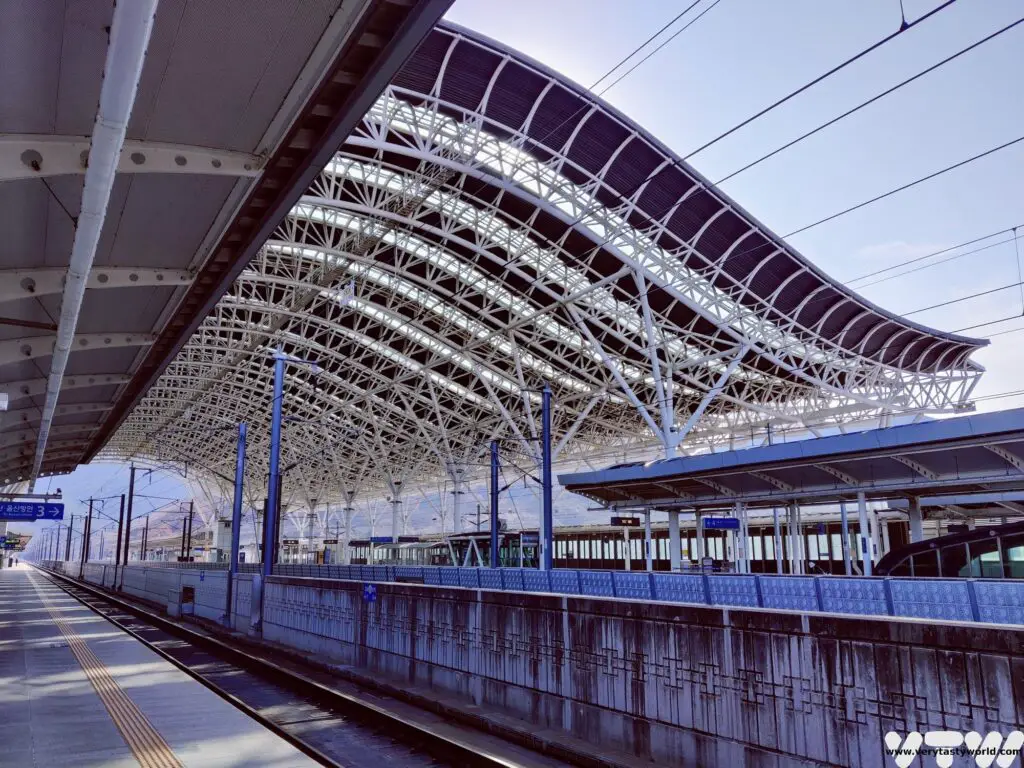
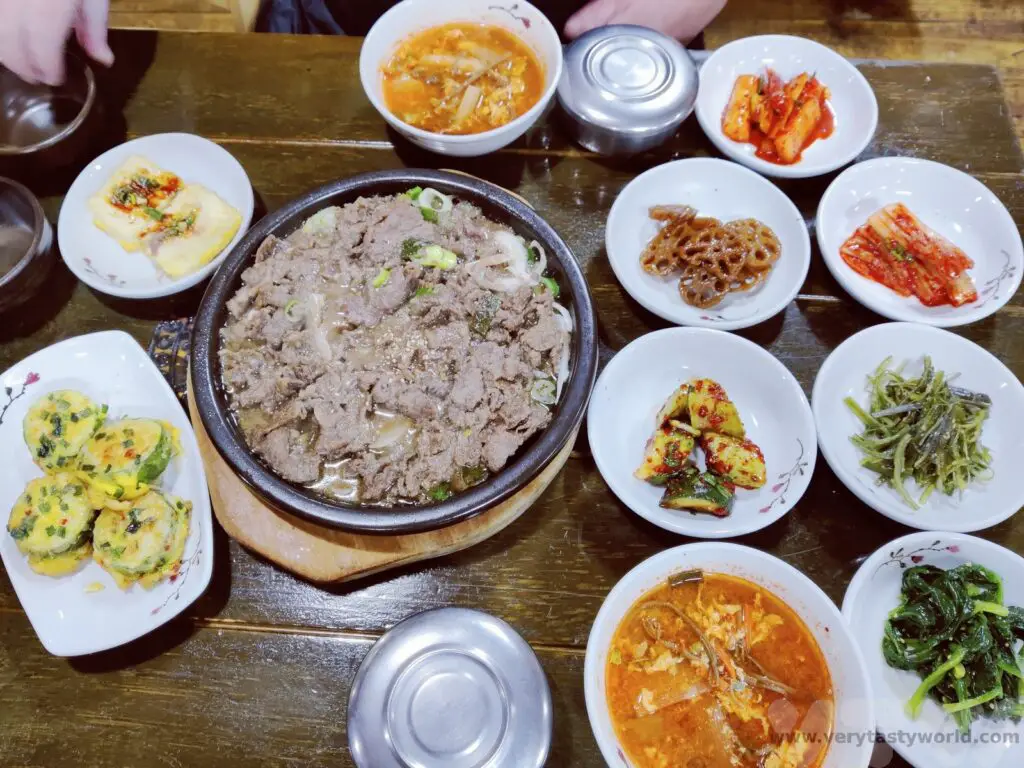
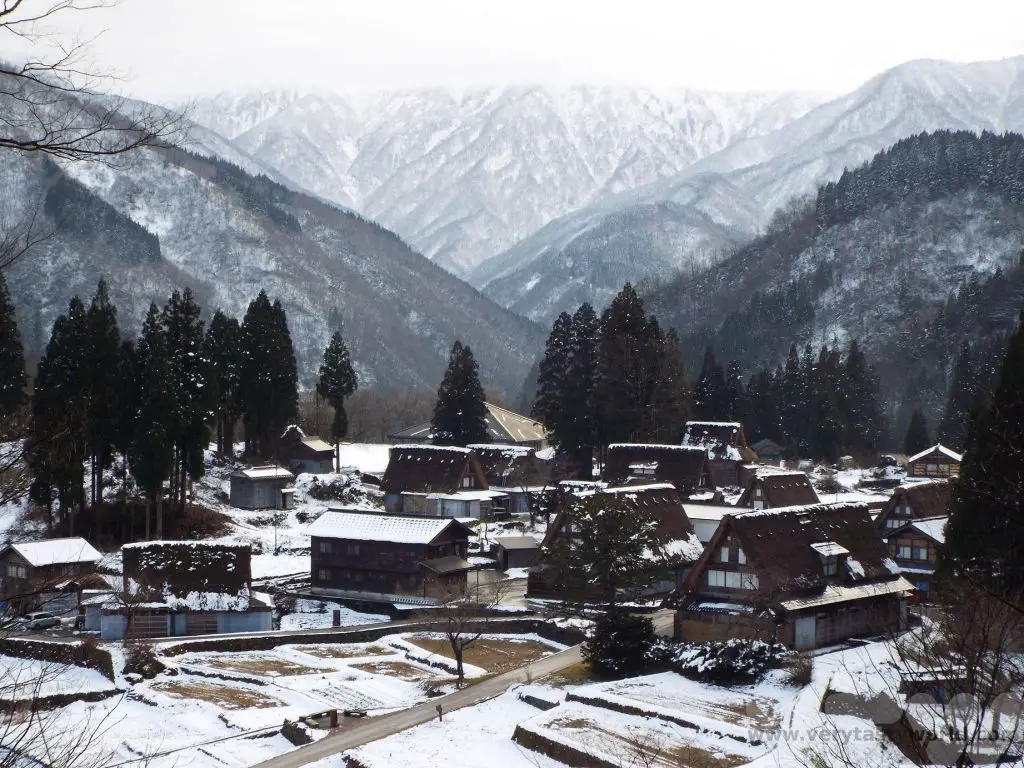
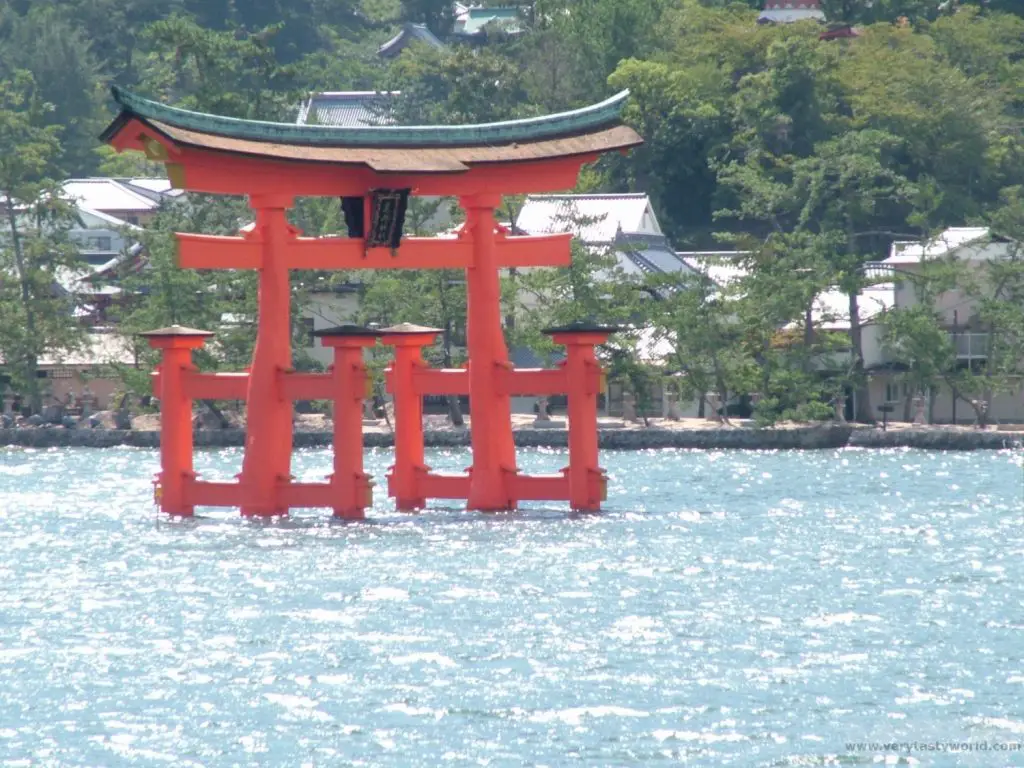
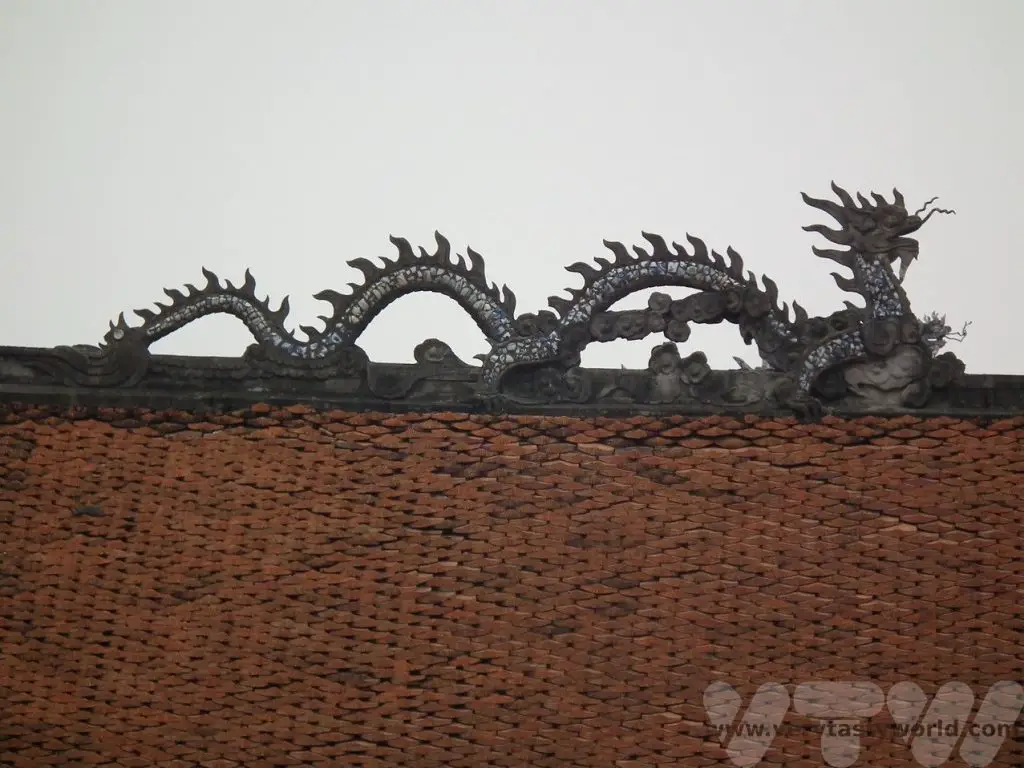
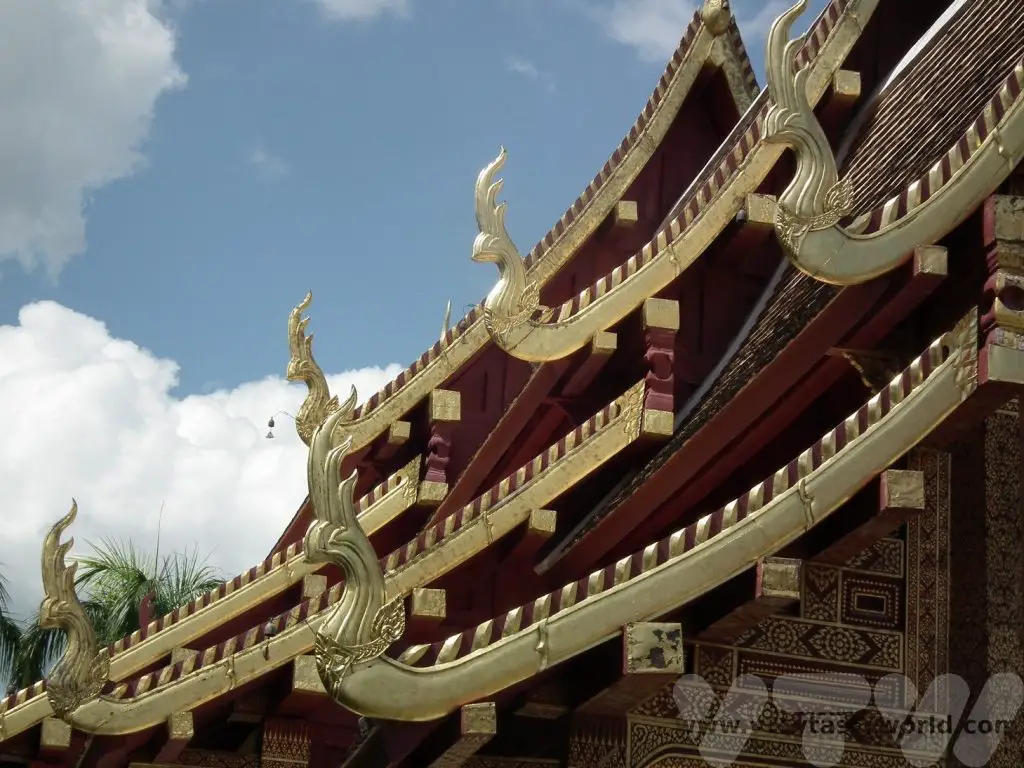
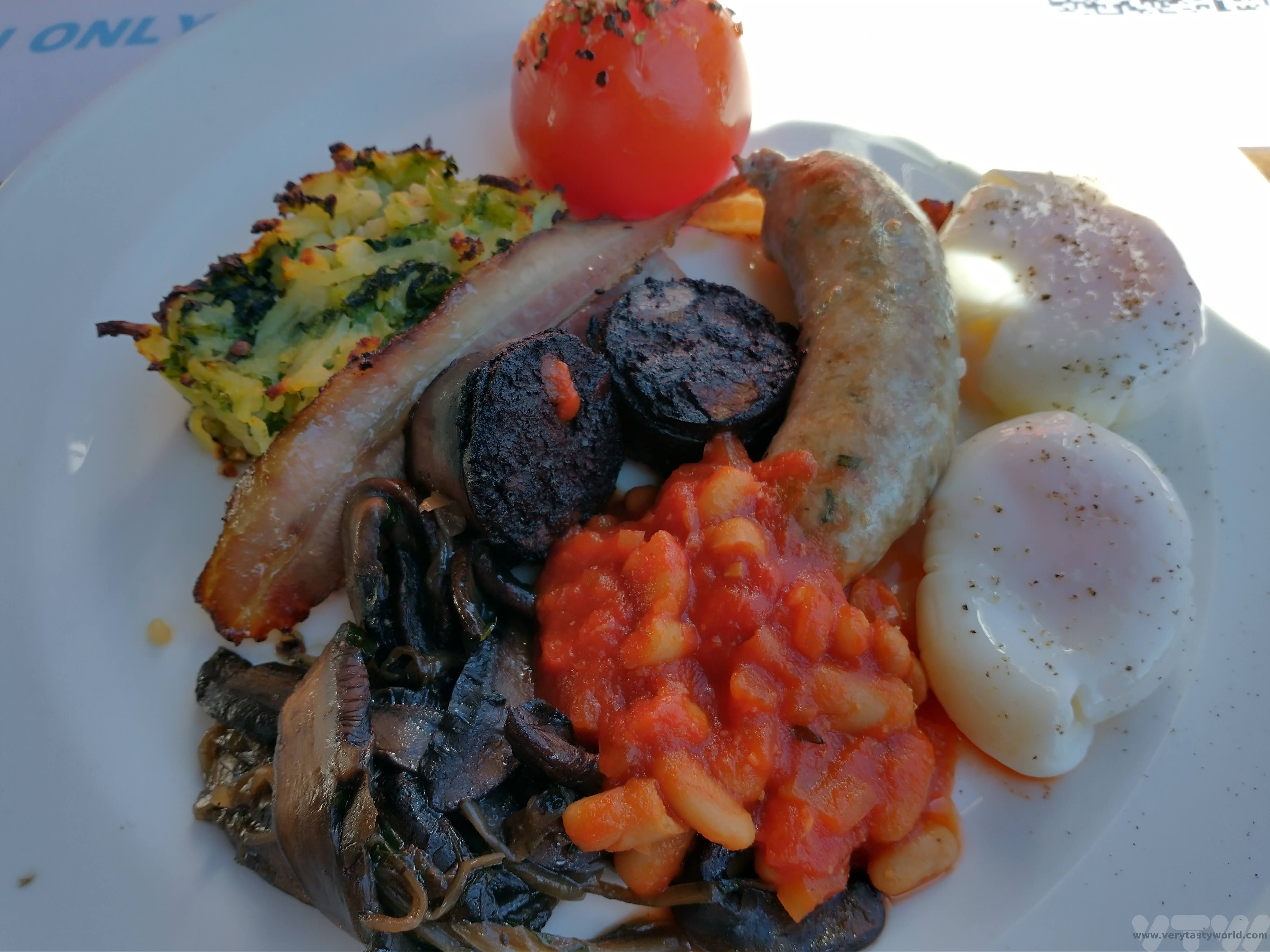








Gyeongju looks very charming and a less traveled destination – which makes it more appealing. I like how the town presents itself – very different from the South Korean’s capital and more attuned to its historic past. The traditional elements are very interesting as well as reading about the Silla people. Of course a trip has to end with a good feast! The food looks so tasty and I could see myself enjoying hwangnam-ppan very much! #flyingbaguette
Jan – https://flyingbaguette.com/
Thanks so much! We absolutely fell in love with Gyeongju – it was such a fascinating place to visit and, as you say, very different to Seoul. And you’re so right about feasting at the end of a long day’s sightseeing!
Gyeongju is now on my radar… it looks absolutely fascinating — but, being a meanderer, I think I would need more time.
I was struck by the stunning beauty of the Silla crown shown in your photo. I know the Gyeongju Gyochon Traditional Village would be a favourite for me. I know I would want to spend many hours here. Another favourite would be the Woljeong Bridge.
I am curious about the Cheomseongdae observatory – how did they get to the window entrance?
Lyn | http://www.ramblynjazz.com
I’m so glad that you found Gyeongju to be fascinating. We agree – we only had two days there but could have spent so much longer exploring this remarkable region. I had to do some research about the observatory. Apparently they had an external ladder to reach the opening and an internal ladder to reach the ground inside.
Learnt a lot about a new area of our world thanks to you! Love how you always find these places and the way you guys are exploring the area. Was not aware that Japan had a gold rush area. The bread looks very sweet, I take it they are actually treating it more like a dessert or snack rather than a substantial meal? The stamp collecting looks awfully familiar to me and would certainly trigger my competitive spirit.
Carolin | Solo Travel Story
Thank you so much! The bread was lovely. Yes, it was sweet, but not overly sweet. It’s usually treated as a souvenir. The bread was mainly sold in pretty presentation boxes with multiple pieces in the box. We didn’t really want to carry these all over the country as they would have got squashed in our rucksacks, so we found a bakery that could sell us a sample!
We loved the stamp collecting – so much fun!
Your Gyeongju itinerary seems well-planned and covers all the major historic sites in the city. The detailed description of each site and the suggested routes make it easier for to navigate and explore. South Korea is on my husband’s short list, but Gyeongju’s rich history and UNESCO world heritage status make me interested in visiting too (as well as your other SK content haha!)
Thank you! We adored Gyeongju and found that the route, although it involved a fair amount of walking, ensured that we could see as many sights. Really glad to hear that you may be visiting soon – we really loved SK and very much want to return.
I was i South Korea but hadn’t heard of this place – wish I had known about it before I went.
It looks stunning and your photos really bring out the beauty of the place .
The Woljeong Bridge is the structure that impressed me most – it looks so strong and dominant on the landscape.
Great that you had daily/morning/afternoon itineraries to follow. I often do the same to get the most out of my time in any place.
If I’m ever back in S. Korea, this place is going to the top of my list!
Thank you for your kind words. We’d thoroughly recommend a visit to Gyeongju if you return to South Korea. It is such a beautiful area, with some many sights and so much history. We, too, were so impressed by the Woljeong bridge – it’s a marvellous construction.
I don’t know much about South Korea other than Seoul, so this was a nice introduction to somewhere different. It looks like a lovely place, cheap enough to visit and with some great sights. The bridge looks beautiful and I feel like I have to get myself some of those gold shoes, lol. Love the fact that the food you had was largely vegetarian, which makes me feel like I wouldn’t starve. It looks so good, and very cheap – that’s the perfect combination.
I’m so glad we’ve introduced you to a new part of Korea. We really loved Gyeongju. Yes, those gold shoes were something else – not sure we could have walked that route wearing those! You definitely wouldn’t starve there – we even found a vegan restaurant. Loads of great options and the food was both cheap and tasty- the perfect combination!
In the last year, South Korea seems to have come into trending and also into the itineraries of many travelers.
For me, having never explored South Asia, it was with great curiosity that I read this article and discovered this region with so much to offer. The historical and cultural richness is unquestionable!
I’m always curious about the food and from the photos I always try to imagine what it tastes like 🙂
Thank you for introducing me to this part of the world that I didn’t know about until now!
Thank you so much. I’m very glad you enjoyed reading about the delightful city of Gyeongju – it is a remarkable region, so rich in culture and history!